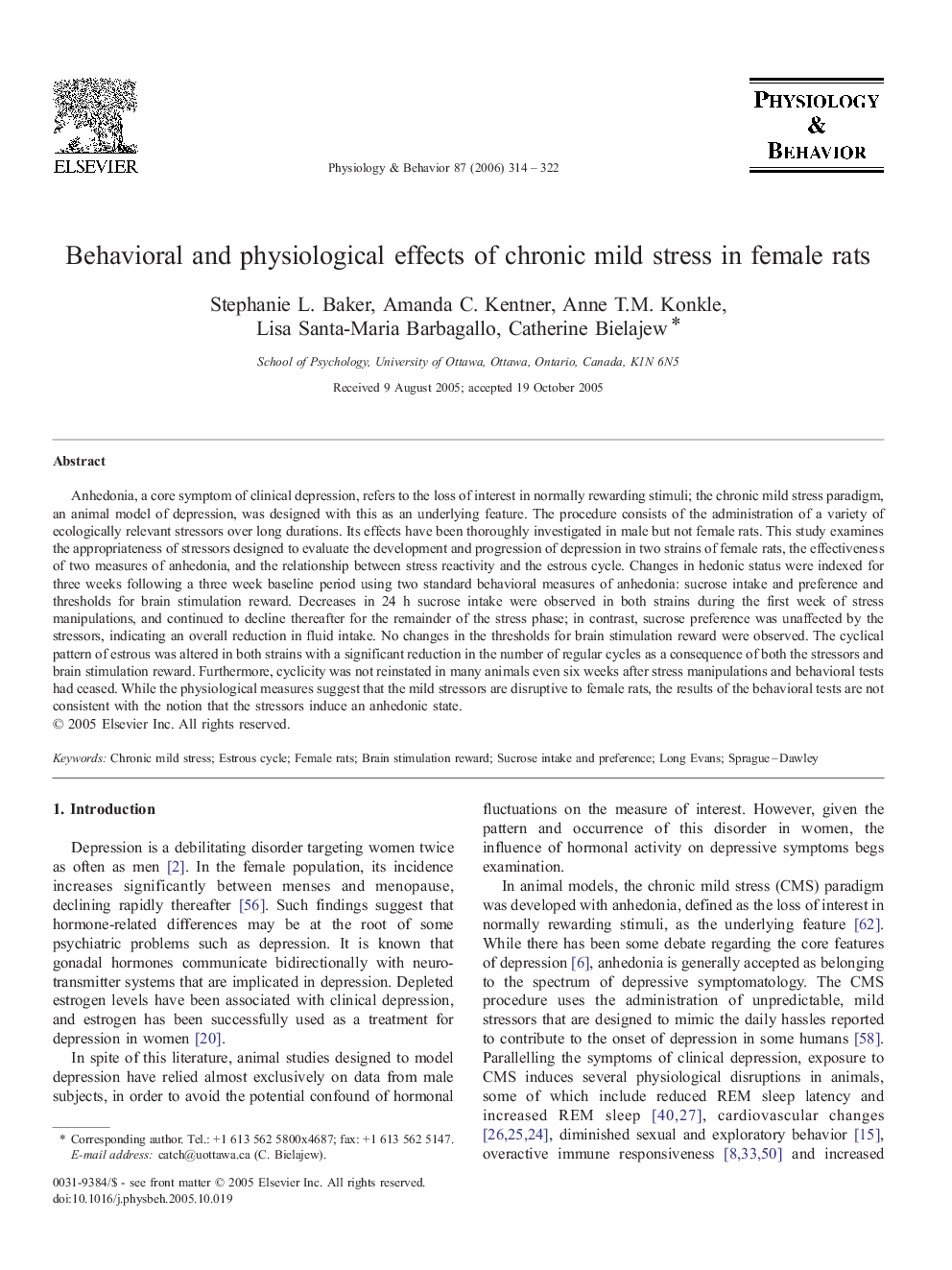| Article ID | Journal | Published Year | Pages | File Type |
|---|---|---|---|---|
| 2846515 | Physiology & Behavior | 2006 | 9 Pages |
Anhedonia, a core symptom of clinical depression, refers to the loss of interest in normally rewarding stimuli; the chronic mild stress paradigm, an animal model of depression, was designed with this as an underlying feature. The procedure consists of the administration of a variety of ecologically relevant stressors over long durations. Its effects have been thoroughly investigated in male but not female rats. This study examines the appropriateness of stressors designed to evaluate the development and progression of depression in two strains of female rats, the effectiveness of two measures of anhedonia, and the relationship between stress reactivity and the estrous cycle. Changes in hedonic status were indexed for three weeks following a three week baseline period using two standard behavioral measures of anhedonia: sucrose intake and preference and thresholds for brain stimulation reward. Decreases in 24 h sucrose intake were observed in both strains during the first week of stress manipulations, and continued to decline thereafter for the remainder of the stress phase; in contrast, sucrose preference was unaffected by the stressors, indicating an overall reduction in fluid intake. No changes in the thresholds for brain stimulation reward were observed. The cyclical pattern of estrous was altered in both strains with a significant reduction in the number of regular cycles as a consequence of both the stressors and brain stimulation reward. Furthermore, cyclicity was not reinstated in many animals even six weeks after stress manipulations and behavioral tests had ceased. While the physiological measures suggest that the mild stressors are disruptive to female rats, the results of the behavioral tests are not consistent with the notion that the stressors induce an anhedonic state.
